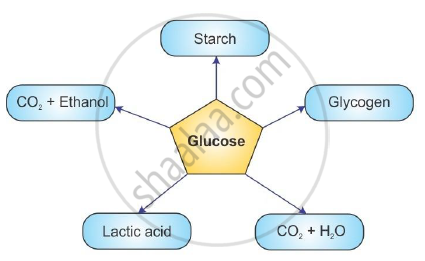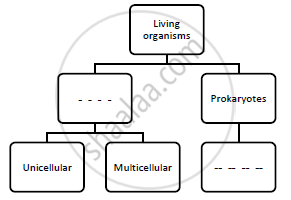Advertisements
Advertisements
प्रश्न
Answer in detail.
Explain the Kreb's cycle with reaction.
उत्तर

APPEARS IN
संबंधित प्रश्न
Given below are the end products of different reactions involving glucose. Write the appropriate end product in front of the following:

(1) Anaerobic reaction =
(2) Reaction in human muscles =
(3) Aerobic respiration
(4) Reaction in plant cells =
(5) Reaction in liver =
Why is diffusion insufficient to meet the oxygen requirements of multi-cellular organisms like humans
Which of the following type of energy is used by living organisms to perform vital life processes? Kinetic energy, Chemical energy, Potential energy, Nuclear energy
Match the terms in column I with those in column II :
| Column I | Column II | ||
| (i) | Trypsin | (a) | Liver |
| (ii) | Amylase | (b) | Gastric glands |
| (iii) | Bile | (c) | Pancreas |
| (iv) | Pepsin | (d) | Saliva |
Skin : Keratin : : Blood : ____________
Rewrite the food-chain given below with correct sequence.
Grasshopper– Snake– Paddyfield– Eagle– Frog
Complete the following flowchart.
Write definition
Nutrients
Write the definition.
Proteins
Write definition.
Glycolysis
Give scientific reason.
Oxygen is necessary for complete oxidation of glucose.
Give scientific reason.
Kreb's cycle is also known as citric acid cycle.
Explain the glycolysis in detail.
Write the forms to which following food materials are converted after digestion.
1.Milk
2. Potato.
3. Oil.
4. Chapati
Answer in detail.
How all the life processes contribute to the growth and development of the body?
Explain the ‘inhalation’.
Soil fertility is determined by its ability to :
Why is there a difference in the rate of breathing between aquatic organisms and terrestrial organisms? Explain.
Name the organs that form the excretory system in human beings.
Find an odd one out.
What are the main energy sources of living organisms?
Explain the Steps of Glycolysis.
Why do fishes die when taken out of water?
Match the words of Column (A) with that of Column (B)
| Column A | Column B |
| Phloem | (i) Excretion |
| Nephron | (ii) Translocation of food |
| Veins | (iii) Clotting of blood |
| Platelets | (iv) Deoxygenated blood |
In each of the following situations what happens to the rate of photosynthesis?
- Cloudy days
- No rainfall in the area
- Good manuring in the area
- Stomata get blocked due to dust
Explain the following concept in short:
Balanced Diet
Explain the following concept in short:
Role of circulatory system in energy production
Give one example of each of the classifications of vitamins.
